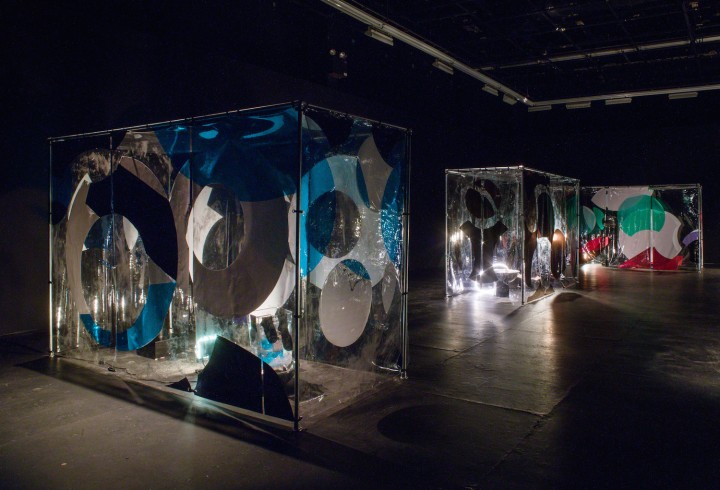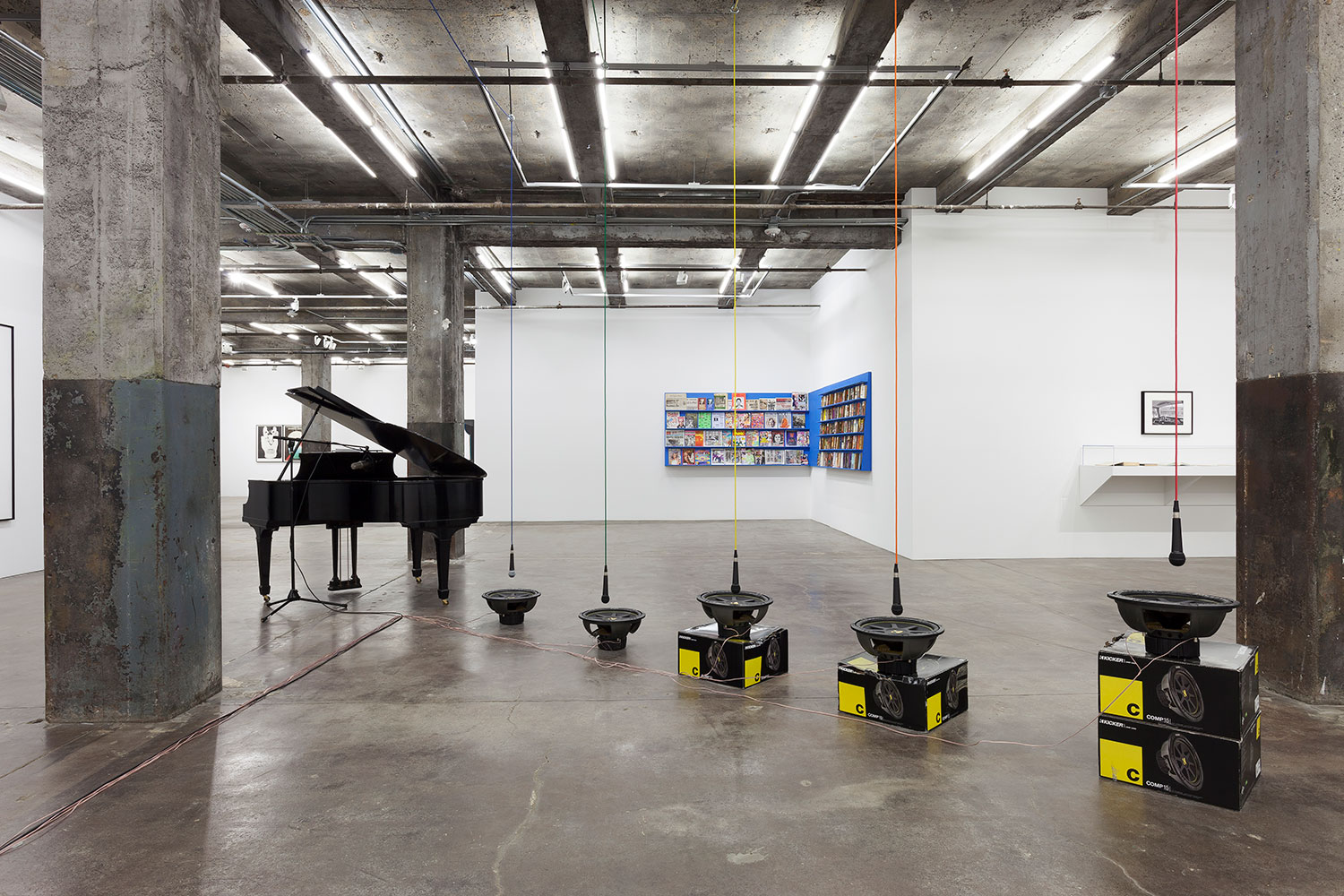Resembling a clinical laboratory abandoned mid-experiment during a power outage, Anicka Yi’s “You Can Call Me F” activated every cubic inch of the Kitchen’s humid exhibition space with an overpowering scent stemming from bacterial contamination. Each stylized quarantine tent in the blacked-out space contained a unique tableau of mysterious chemical experiments and was hung with oversize, brightly colored circular cutouts in graphic overlays: on the surfaces were jugs filled with different colored liquids, coiling electrical cords, industrial light bulbs, neon forms, motorcycle helmets concealing scent diffusers, and bent reflections from stray metal laboratory tools.
Near the entrance, Grabbing at Newer Vegetables (2015) was a large tray of colored gel that hosted the inner-cheek swabs of one hundred of the artist’s friends, mostly fellow artists. The result formed layers of bacterial graffiti over the backlit surface. Under guidance from biologists at the Massachusetts Institute of Technology (MIT) during a recent residency, the artist analyzed air samples from her experimental setup along with samples taken during Gagosian Gallery’s latest Urs Fischer exhibition; the resulting scent was diffused throughout the gallery. The visual contagion, consuming itself while on display, was left bathing in palling artificial chartreuse fluorescence for the duration of the show.
Earlier works have tested the dangers of other exposures: various interventions in toxic resin, tempura-frying fresh flowers, simmering bones and glycerin sous-vide, and leaving a mix of hair gel and tripe to sit in a handbag. Just as unsettling are Somewhere Between I Want It and I Got It and Can You Teach the Agony to Sing (both 2014), vinyl and silicone bubbles of text message exchanges elevated by their materials to be given overwrought analysis. Harnessing the productive possibilities of pollution and seepage, Yi illustrates the potential of growing a female artist network into an unstoppable epidemic. Like “Lonely Samurai,” Yi’s podcast series that advocates for female networks within the art world, these growing constellations of bacteria map out circuits as quickly as anything shared online.


